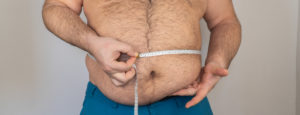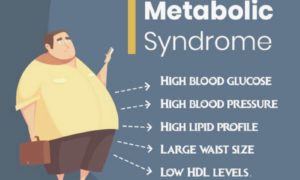
Do you have a hazardous waist?
Better than one in three Kiwi men can’t see their penis. There’s some hazardous waist like a fatberg in the way, but we don’t call it that.
Instead we soften the problem by using friendly names: spare tyre, beer belly, middle-aged spread, love handles, massive puku, but really we should be calling it what it is – obesity.
A growing 34% of us are classified as obese, ranking us just behind the US, Mexico and Chile as the world’s chubbiest developed country. [WHO figures, 2021]. The term ‘obese’ refers to a BMI (body mass index) of 30 or more, and one of 25 or more is termed ‘overweight’. The vast majority of us fall into these two categories.
According to the numbers from the Ministry of Health in 2021, roughly 60% of Asian men fall into the overweight/obese camp, Europeans are approx. 70%, Māori are around 80% and Pasifika men just tip over the 90%. These differences are linked to many factors but the biggest is actually where you live, rates being up to 60% higher in our least well off areas.
It can happen to us all
Gaining a little bit of weight slowly over time is dangerous. We don’t realise it’s happening but gradually that waist size can creep up. It goes unnoticed then is accepted as the new normal. It’s estimated that from the age of 20, left unattended the average man will put on between 0.5 – 1kg of fat per year up-to the age of 50.
Put simply, gaining weight is the result of an energy imbalance. You put energy (kilojoules/calories) into your body as food, and when you don’t use up enough of that by exercise and daily movement, the excess energy gets stored as fat.
Why is this a problem?
Being overweight majorly increases your risk of heart disease, stroke, diabetes and some types of cancer. Doctors up and down the country know that the line from obese to type 2 diabetes is straight and too often too short. And the really bad news is, these conditions are among the leading causes of preventable death.
Grabbable fat around our waist is the problem. It’s the bad sort of fat, wrapping around our organs and being more metabolically active than other fat, meaning it really disrupts things. It’s also harder to get rid of.
Measuring up
BMI is calculated using weight and height, and is a reliable indicator for health professionals. The World Health Organisation uses waist size as a guide to metabolic risk with their categories for men showing that waist circumferences of more than 94cm show increased risk for metabolic syndrome (obesity, high blood pressure, high glucose levels, high blood fat levels, low good cholesterol levels).
| Metabolic Risk Category | Males: Waist Circumference |
| Normal | Less than or equal to 94 cm |
| Increased Risk | Greater than 94 cm |
| Greatly Increased Risk | Greater than 102 cm |

Another reasonably reliable indicator of possible belly fat problems is the measurement of your waist size divided by your height. If this measure comes up at a half or more, you’re likely on your way to or already rocking a hazardous waist.
Measure your waist at or just above your belly button, not where you hang your pants. And no sucking in.
What to do?
When shirt tucking is a memory only and you’re backing your bum into the car before swinging the legs in, or you use a mirror to check your penis out, it’s time to make a change.
The good news is you can reduce belly fat, and it is not by suddenly murdering your abs. A hazardous waist is most effectively reduced by a combination of exercise and diet. It can take time, needs mental strength but it works.
Start small, reduce your calorie intake, start to increase your calorie burning, make your targets real. Take today’s result and add tomorrow’s to it, build confidence on your momentum, keep going.
Think of this: if you could lose even a kilo each month, in maybe a year or so that belly is gone and whacko, you’ve ditched that mirror and checking your bits out for real.


